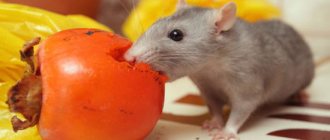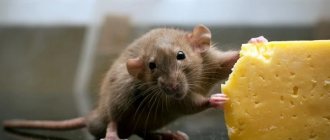What to feed at home?
Under natural conditions it is an omnivorous predator. Red-eared turtles eat plant and animal foods with equal appetite. In nature, they hunt for small fish, snails, fry, crustaceans, and plankton. But for the strength and growth of the shell, the substances contained in food of animal origin are not enough, therefore plant food is definitely needed, from which the body receives vitamins and calcium.
The peculiarity of these turtles is that they eat in water, although it is quite possible to train them to eat on an island equipped in an aquarium, but this will take time and patience.
It is necessary to accustom it, since constant feeding in water leads to the fact that uneaten food quickly deteriorates, and an unpleasant odor begins to emanate from the aquarium.
To teach a turtle to take food on land, food is first placed near the very edge of the water. A hungry reptile will definitely take food. Then she is gradually accustomed to taking food from a small saucer into which a little water is poured.
If you wish, you can take the turtle out and feed it in a small plastic bowl of water. In this case, the water in the aquarium will remain clean for the longest time.
Pond slider
Feeding time
Turtles are active during the day and sleep at night. A temperature difference is created in the terrarium - it is warmer during the day than at night: an incandescent lamp and a thermal mat are on. In the morning, warming up under the heat emitter, the cold-blooded animal increases its body temperature. When it reaches 30⁰C, the body is ready to digest food.
In a warmed reptile, digestion and absorption of nutrients are more intense. Therefore, the feeder is not placed in the terrarium as soon as the lamps are turned on and the animal wakes up. And after some time. If fed in the evening, then three to four hours before bedtime, so that digestion takes place in the warmth at an optimal pace.
Plant food for red-eared turtles
Remember that the older your pet is, the larger part of the diet should be plant food. Young animals always prefer food of animal origin; they can completely refuse plant food within a few days.
List of what red-eared turtles eat from plant foods :
- Vegetables - you can give cucumbers, tomatoes, zucchini, sweet peppers, pumpkin, radishes, beets. Most turtles don't really like carrots. They also give celery, broccoli, and white cabbage (in small quantities). All these vegetables must be raw, without traces of rot or mold. You can’t give boiled ones, they no longer contain anything useful for the turtle’s body. Onions, radishes, rhubarb, and eggplants are strictly prohibited.
- Fruits and berries - apples, pears, bananas, plums, peaches, mangoes, tangerines, oranges, apricots, melons, strawberries. They must be damp and without signs of rot, mold, or worms inside. They are cut into small pieces before feeding. Citrus peels and berries with seeds should not be given.
- Mushrooms – turtles can be offered pieces of champignons, russula, boletus, but not more than once a week.
- Grass – these reptiles love the leaves and flowers of dandelions, plantain, clover, coltsfoot. You can bring them lawn grass. You need to collect greens for turtles only in pedestrian squares, parks, or, in extreme cases, on streets with private houses where few cars drive. It is strictly forbidden to bring greens collected near large roads and railway tracks. In winter, oats should be sprouted in cups for the turtle; when the greens grow to a height of 5 cm or more, they are cut and fed. For germination, you will need to stock up on soil and sand in advance in the summer; you can also grow oats in sawdust.
- Aquarium plants – duckweed, spirogyra, water beetle, and pond algae are suitable for turtles. These reptiles will not allow plants to grow luxuriantly, because they quickly eat them. You cannot plant elodea, its juice is poisonous to the red-eared turtle.
Spirogyra
Prohibited Products
In addition to recommendations containing a list of the best foods for the development of a pet, there is also a list of prohibited foods that should not be given to turtles under any circumstances. This:
- flour products: bread, buns, etc.;
- spinach, peas, rhubarb;
- tomatoes;
- citrus fruits: oranges, tangerines, grapefruits, pomelo;
- nuts;
- lamb, pork;
- dairy products: cottage cheese, milk, sour cream;
- fried or boiled food;
- cheese;
- radish;
- White cabbage;
- mushrooms;
- food intended for fish or other animals;
- fruit seeds;
- fatty fish;
- squid;
- crab sticks.
Red-eared turtles are predatory creatures, and with proper care, the creatures can delight the owner with a funny appearance and longevity. One of the most important aspects of keeping and caring for turtles is the diet, because only when fed with high-quality, fresh and varied food will the pets not get sick.
What animal foods can you feed?
They should make up at least 70% of the turtle's daily diet. With age, their number decreases slightly.
Animal feed:
- only meat you can give is beef, rabbit, chicken, and turkey. Lamb and pork are not allowed. The diet must include chicken by-products: stomach, liver, heart. Meat can be given raw or cooked. Before feeding, it is finely chopped. You cannot feed raw meat constantly, otherwise the turtle will develop rickets. You need to alternate between cooked and raw.
- Fish and seafood - pollock, hake, cod, blue whiting, navaga, perch and carp are suitable. The fish is cut into small pieces along with small bones. Large rib bones are removed. Before feeding, raw fish must be placed in hot water for a couple of minutes to neutralize the enzyme thiaminase, which is harmful to turtles. Without such pre-treatment, you can serve a “sea cocktail” in its raw form - pieces of octopus, squid, shrimp. Fish for turtles is food, so they do not get along in the same aquarium: the fish will be caught and eaten.
- Insects – you can buy grasshoppers and mealworms at the pet store. Also in the diet there should be gammarus, they periodically give daphnia, turning off the filter for 15 minutes during such feeding. You cannot give beetles caught on the street. You should also not feed cockroaches; they may already be poisoned.
Seafood
Getting ready to purchase
About 80 percent of people who started reading this article will think - what is the purpose of preparing, bought an aquarium and went after a turtle. It couldn't be simpler. But it turns out that everything is not so simple
And we will emphasize the importance of preparing for buying a turtle using the example of a specific family from the city of Moscow, into whose life a small green cute thing named Rafa burst into
The appearance of the animal caused unimaginable delight, and, naturally, it was necessary to urgently solve the turtle’s housing problem. The first aquaterrarium was purchased and furnished on the same day, and Rafa rushed to explore the new home. Why the first? Some nuances should have been known about reptiles, as it turned out a little later.
Not a single seller of terrariums on the market told buyers that after 2-3 years a 30-liter container will no longer be enough for a turtle. After all, animals grow to the size of a good plate of soup in the size of a shell.
No one said that red-eared turtles are not hamsters, they live 2-3 years and the owner is allowed to choose a new pet. In captivity, red-eared turtles live up to 50 years. And you should approach the question responsibly: are you ready to take care of this pet for half a century, or is it not for you.
Well, and the most interesting thing is that when asked about feeding, the sellers named different types of food, but forgot to mention the main point - if you feed the animal with meat, the turtle will develop the habit of biting. And with a high degree of probability, by the age of 5 the creature will become simply dangerous to pick up and try to play with it.
Still have the desire to buy such a pet? Then let's figure out what to feed the turtle.
Feeding with artificial feed
This is the best choice for busy people who do not have time to prepare a diet for a turtle or cut up food. Pet stores have special balanced food for red-eared turtles in tablets, granules, flakes and capsules. In fact, they are food for fish, but improved taking into account the needs of the reptile's body.
There are times when a turtle does not like the pungent smell of such food; it turns away from artificial food, but after a while it still gets used to it. Its main disadvantage is the high price.
What do herbivores like?
Most of the food for herbivorous turtles should be fresh greens; it is better to give the animals salads, leaves, and herbs. 1/5 of the diet may include vegetables: carrots, zucchini, pumpkin, unsweetened fruits are acceptable in moderation. A small slice of apple or pear once a week will please your pet and will not cause harm to its health.
It is imperative to dilute the diet with specialized food for turtles, bran, soybean meal, and dry yeast. However, the following foods should not be given to vegetarians:
- meat in any form, including minced meat;
- fish;
- food for cats or dogs;
- bread.
A competent approach to nutrition will allow the animal to remain healthy and active for many years, delighting the owner with its funny antics.
Mineral and vitamin supplements
A young reptile needs calcium during the period of active growth, formation of the skeleton and shell. Every day there should be a pinch of bone meal in the diet; it is added to the main feed. Adults should be given 1 teaspoon of bone meal once a week. This supplement is sold at a pet store or at a market that sells grain for poultry.
As a substitute, you can use eggshells ground in a coffee grinder.
Pet stores offer a large selection of vitamin supplements for red-eared turtles. They must be given in strict accordance with the recommendations on the packaging.
An expired vitamin supplement can become poisonous to a turtle; you need to pay attention to this when purchasing and storing vitamins.
Bone flour
Should I bathe my turtle and how often should I change the water?
Considering that the marsh turtle lives in water, many owners have a question: do they need to bathe the reptile? Precisely because the reptile is aquatic, some pet owners doubt the advisability of carrying out such a hygiene procedure. But since it is almost impossible to keep the aquarium perfectly clean and dirt appears on the animal’s shell, it must be removed mechanically.
Water hygiene procedures are necessary as dirt forms on the shell. Wash your pet in warm water with a soft cloth, or better yet, a brush. In no case is it permissible to use hard materials that can damage the keratinized covering of a pet.
A marsh turtle in an apartment should be kept only in clean water. First of all, this is due to the fact that the animal defecates directly where it lives, thereby leading to pollution of water resources. Reptile owners must constantly monitor the purity of the water, otherwise it can cause various diseases in the reptile.
A complete change of water and cleaning of the aquarium should be carried out at least once a month. In order not to disturb the animal, you can leave a small amount of water in the container, diluting it with fresh water. Aquarium experts recommend using distilled tap water. At the same time, if you install high-quality filters, then cleaning in the turtle’s home will occur much less frequently.











